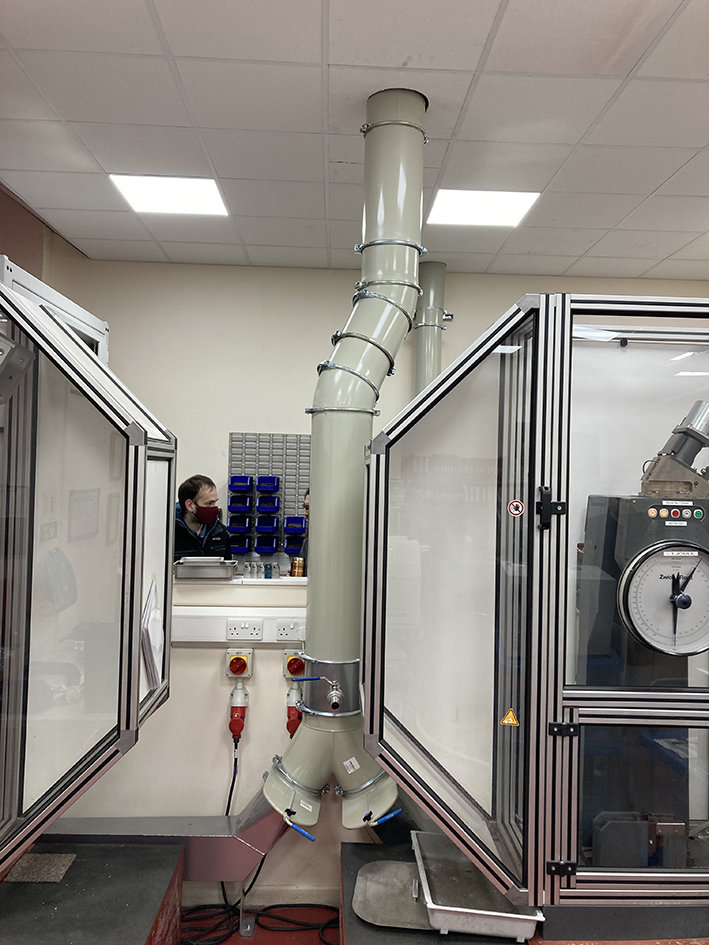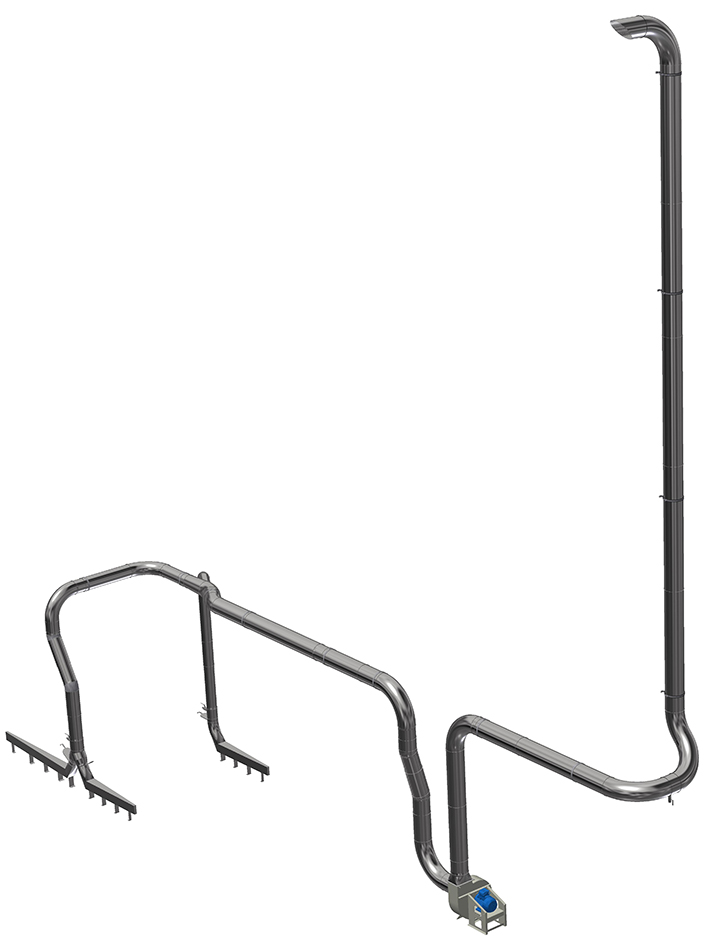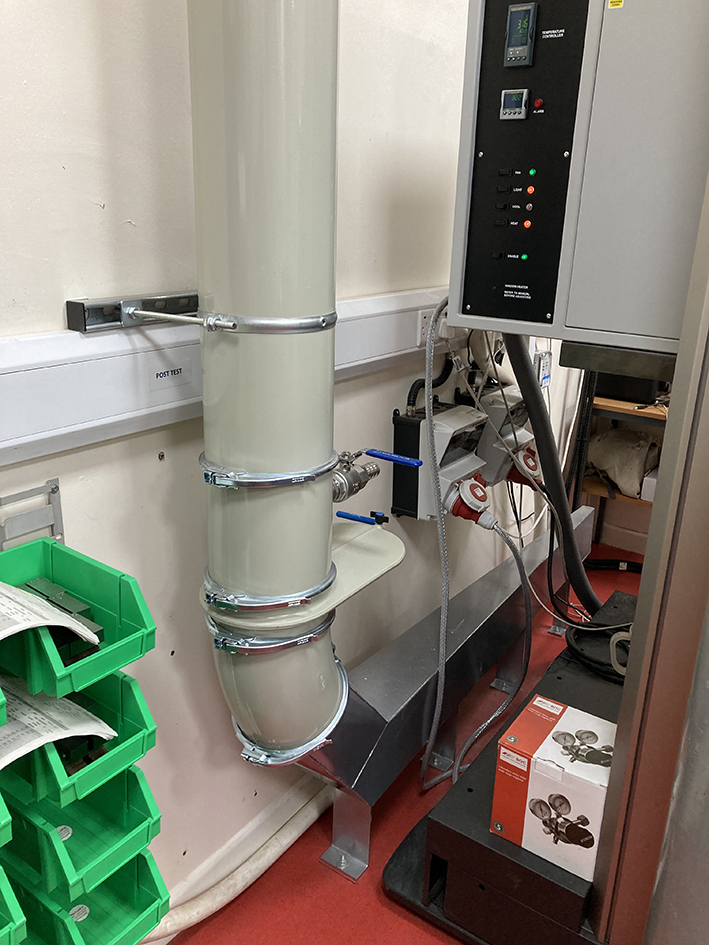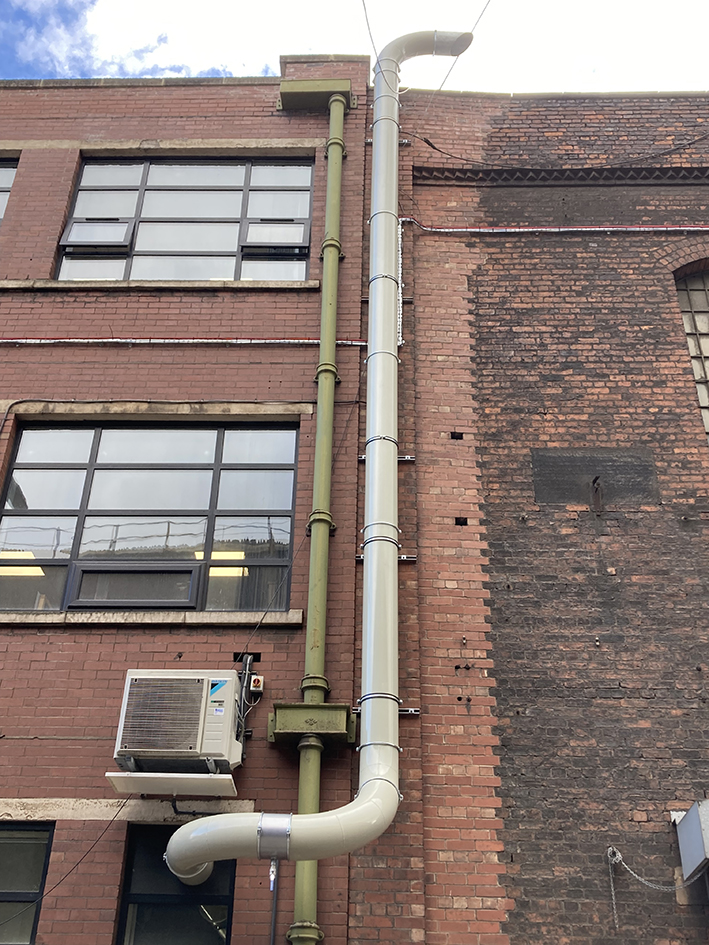Project SFEL – Nitrogen fumes extraction system
CONSULTANT’S REPORT
Nitrogen Extraction System Details:
- Control panel
- ID fan
- Nitrogen extraction points
- Ducting
- Three nitrogen extraction points

The enquiry came from a test laboratory at Sheffield Forgemasters. We had previously worked at this site on more than one occasion supplying a retractable burning booth initially and later a dedicated CleanPULSE cartridge filter for the Melt Shop.

Our client has impact testing machines in the laboratory that use nitrogen. During these tests there is a potential for oxygen depletion caused by nitrogen leaking from this equipment. As nitrogen is heavier than air, floor level ventilation hoods were required as well as two spigots in the ducting with ball valve isolation to attach flexible hoses. The test laboratory had an oxygen sensor system that alarms in the event of the oxygen level dropping below a certain safe level.
We have been advised that client wishes to have 10 air changes per hour normally rising to 20 air changes per hour if the relay output in the oxygen sensor triggers indicating a reduced oxygen level. We had conducted a site survey to measure the laboratory in order to equate the 10 or 20 air changes to a volume in m³/hr.

Based on a laboratory measurements we have established that in normal operation a volume of 2,820 m³/hr is required for 10 air changes per hour and 5,649 m³/hr if the oxygen level falls below its usual and 20 air changes per hour is required.
Based on a laboratory measurements and calculated volumes, a nitrogen fumes extraction system was designed.
Extraction hoods were designed in a tapered shape to ensure equal extraction velocity is maintained through the hood.
Three nitrogen fumes extraction hoods were installed behind the test machines, each extraction hood has a damper valve in case an extraction point behind a test machine needs to be isolated. Above the ceiling, the extraction hoods are joined in to one common duct and routed to the outside of the building. The ducting was installed above false ceiling tiles.
Ducting was terminated at 15m high from the ground level to allow nitrogen fume dispersion into the atmosphere. A ball valve was installed at the bottom to drain any rainwater from the ducting.
The ID fan was installed in the nearby workshop to avoid excessive noise in the laboratory.
Designed and provided by FDL, the control panel was installed by the client and wired to the existing lab oxygen sensor. Vent louvers were installed by the client on the opposite door from the fumes extraction points to allow appropriate air circulation.
The installation was completed over the weekends to minimise disruption in the test laboratory and is now providing nitrogen fumes extraction as and when required and the lab technicians advise the system is performing as intended.

Our recent Projects
We were contracted to provide 2 small Ceramic filters suitable for a small volume but with a design maximum temperature of 600°C. In addition the filters will be handling a syngas which cannot be mixed with oxygen so an alternative to compressed air would need to be used for the ‘Cleanpulse’ cleaning of the 25 Ceramic element in each of these CPC78 filters. In addition dosing of small amounts of a re-agent is required so the client also opted for a ‘Cleandose’ 25kg bag skid. Find out more about Project CAD below.


